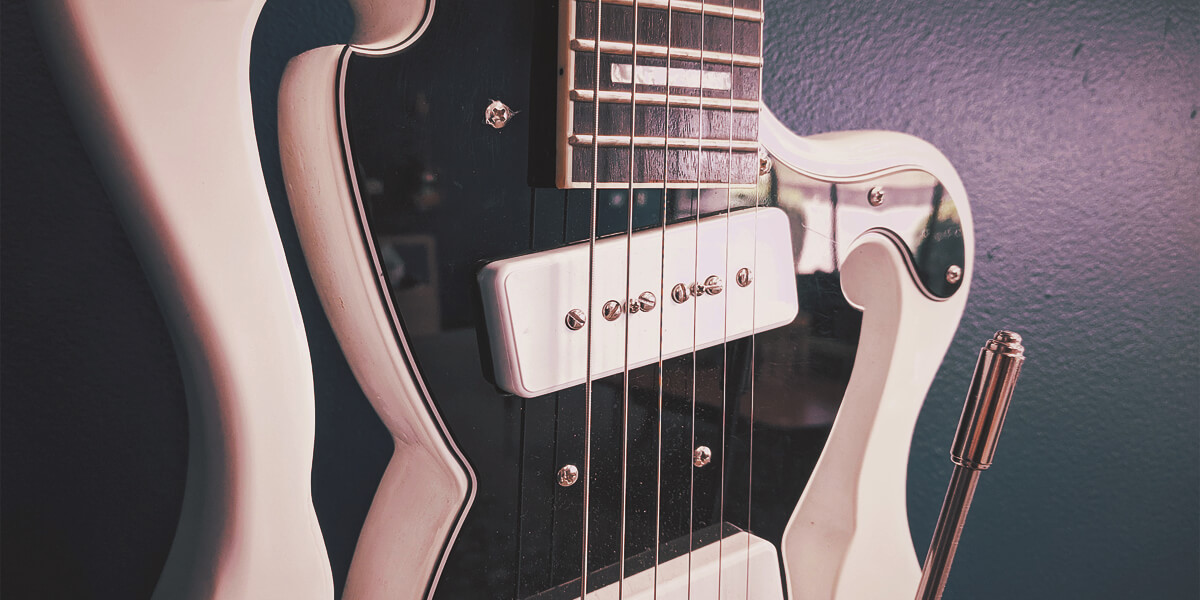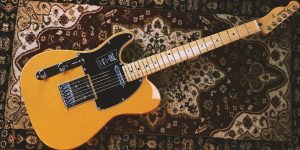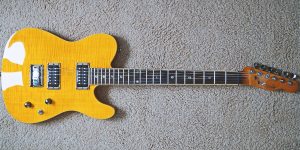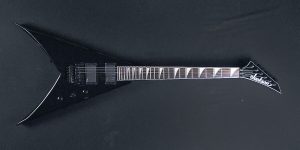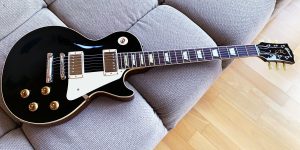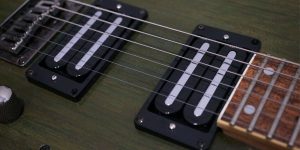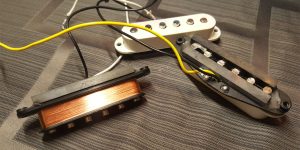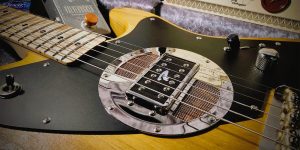If you’ve ever wondered about the magic behind the captivating sound of a guitar, you’re in for a treat. In today’s guide, we’ll dive into the fascinating music world, clarifying the difference between guitar pickups.
These small yet powerful components are vital in capturing the strings’ vibrations and transforming them into a symphony of exhilarating tones. Whether you’re a seasoned guitarist or just starting, understanding the various types of guitar pickups helps to find the perfect sound.
Join me as I explore the unique sonic characteristics of each type and discover which styles shine brightest in different musical genres. Let’s embark on this sonic journey together!
Single-coil pickups
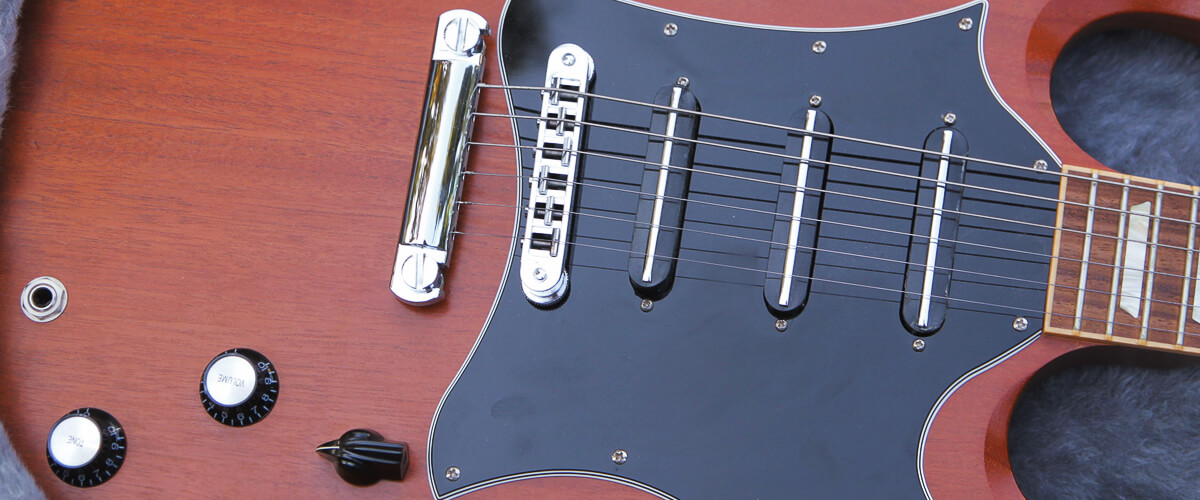
Single-coil pickups are known for their simplicity, both in construction and design. They typically consist of a single coil of wire wrapped around a magnet encased in a metal cover. This minimalistic approach yields a clean, transparent tone, emphasizing high-frequency response and dynamic clarity.
Distinctive tone
The bright, clear, and articulate sound of single-coil pickups comes from their exceptional ability to capture every subtle nuance of your playing. The pickups’ responsiveness and clarity allow for a wide dynamic range, ensuring that every note you play rings out precisely.
Genres and styles
Single-coil pickups have left an indelible mark on various genres and styles of music. Let’s explore a few:
- Blues: The pickups’ ability to deliver sparkling highs and articulate midrange perfectly complements the genre’s heartfelt melodies and expressive playing.
- Country: Single-coil pickups are the backbone of country music’s twangy charm. They offer the crispness, twang, and clarity that defines this genre’s signature sound.
- Surf rock: The pickups’ crisp attack and bright highs cut through the mix, making them ideal for the lively and energetic surf rock sound.
Humbucker pickups
Humbucking pickups, also known as humbuckers, possess a unique design that sets them apart from their single-coil counterparts. They consist of two coils, hence the name “dual coil design.” Unlike single-coil pickups that are more prone to electrical interference or hum, humbuckers employ a brilliant trick to cancel out that unwanted noise.
Double coil design
With two coils wound in opposite directions and connected out of phase, humbuckers effectively eliminate the hum that can plague single-coil pickups. This noise cancellation results in a cleaner, quieter signal, allowing you to crank up your amp without worrying about unwanted interference.
Genres and styles
- Classic rock: If you’re a fan of those iconic guitar-driven anthems from the ’60s and ’70s, humbuckers are your best friend. Their warm and thick tone adds a touch of vintage grit to your riffs, making them the perfect choice for capturing the essence of classic rock legends like Led Zeppelin or AC/DC.
- Heavy metal: When it comes to heavy metal, humbuckers are an absolute powerhouse. They excel at producing the high-output, aggressive tones required for intense palm-muted riffs and blistering solos.
- Jazz: while humbuckers are often associated with high-gain sounds, they have a versatile side that suits the smooth, mellow vibes of jazz. Humbuckers produce a warm and velvety tone, perfect for capturing the soulful nuances and rich chord voicings that define jazz music.
Piezo pickups
What is a piezo pickup? This is one of the guitar pickup styles that uses piezoelectric crystals to convert mechanical vibrations into electrical signals. It utilizes piezoelectric transducers, which convert mechanical energy into electrical signals. In simpler terms, these pickups directly capture the vibrations from your guitar’s bridge or saddle, resulting in a clear and natural acoustic sound.
Reproducing of tonal characteristics
The beauty of piezo pickups lies in their reproducing the unique tonal features of acoustic guitars faithfully. They excel at capturing the nuances of fingerpicking, strumming, and percussive techniques, allowing you to showcase the instrument’s true acoustic essence even when plugged into an amplifier or sound system.
Usage features
Piezo pickups have become a staple in acoustic and electro guitars. Many manufacturers incorporate these pickups as a standard feature, recognizing their immense value for live performances and studio recordings.
But you don’t have to limit yourself to just piezo pickups. It’s common to find guitars that combine piezo and magnetic pickups, opening up a world of tonal possibilities. By blending the warmth and richness of magnetic pickups with the natural acoustic charm of piezo sensors, you can create unique sonic textures that suit your musical style and preferences.
If you’re craving the organic sounds of an acoustic guitar in a live setting or looking to explore new sonic landscapes by combining different guitar pickup types, piezo pickups are worth considering.
P90 pickups
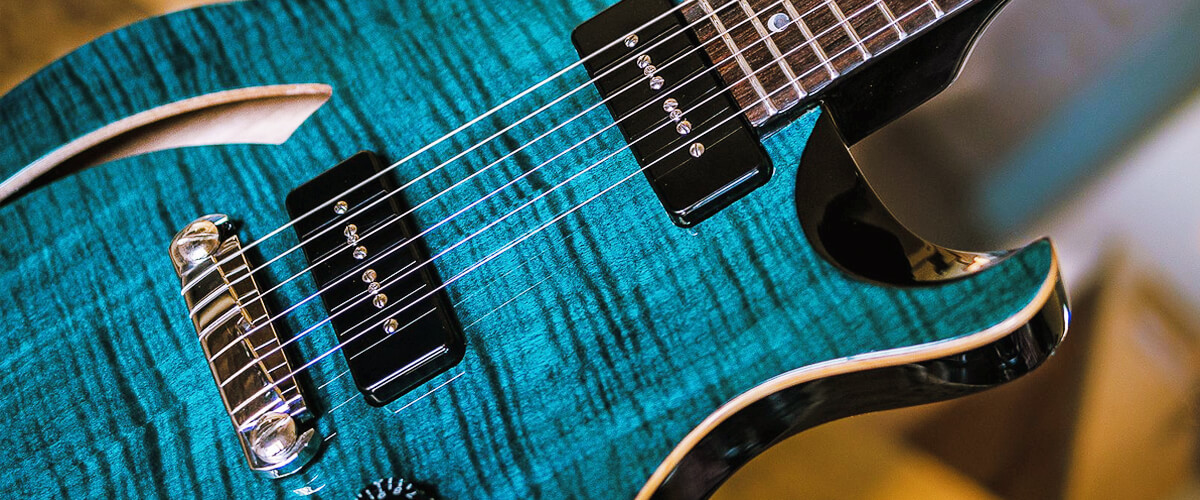
The P90 pickups are renowned for their rich, punchy, and raw tone, often described as having a captivating midrange presence. When you play with these pickups, you’ll immediately notice the vibrant and lively character they bring to your sound. They deliver a powerful crunch when you dig in, while still retaining clarity and definition in your notes.
Genres and styles
Popularized in genres like blues, garage rock, and alternative rock, P90 pickups have become an integral part of the sonic landscape. They are perfect for people seeking a gritty and expressive sound that cuts through the mix with authority. Whether you’re looking to capture the soulful bends of blues, the raucous energy of garage rock, or the textured layers of alternative rock, P90 pickups have got you covered.
Active vs. passive pickups
Now, I want to shed some light on a topic that often sparks debate among guitarists: active vs. passive pickups.
Active pickups
If you’re searching for a powerful and versatile sound, active pickups might be just what you need. Let’s explore their benefits point by point.
- More powerful output signal: Active pickups pack a punch with higher output than passive pickups. Their boosted signal can effortlessly cut through tight mixes, allowing you to produce powerful and aggressive sounds that demand attention.
- Low noise: One of the advantages of active pickups is their ability to maintain a lower noise level compared to passive pickups. This reduction in unwanted noise and interference provides a cleaner and quieter signal. In high-gain situations, where noise and feedback can be a real headache, active pickups truly shine and allow your playing to be heard with clarity.
- Accumulator battery: I should note that active pickups rely on a 9-volt battery for power. Regularly checking and replacing batteries will prevent unexpected power outages during your performances or recording sessions.
- Suitable for heavier genres of music: The increased power output, density, and clarity make active pickups a perfect choice for musicians seeking a modern, crisp, and powerful sound. However, don’t let their genre association fool you – active pickups are versatile and can be used across various musical styles and genres.
Passive pickups
Passive pickups have been a staple in the guitar world for decades, and for good reasons. So let’s take a closer look at what makes them so special.
- Classic sound: Renowned for their simplicity, passive pickups offer a warm vintage tone that many guitarists adore. By relying solely on magnets and coils without the need for active circuitry, these pickups retain the traditional and organic nature of the guitar sound.
- Musical versatility: Passive pickups are incredibly versatile and can cater to various musical genres and playing styles. They are particularly well-suited for blues, rock, folk, and vintage genres that require a more organic, dynamic, and soulful sound. Passive pickups can adapt and bring your music to life with their rich tonal characteristics.
- Simplified design and maintenance: Unlike active pickups, passive ones do not require built-in preamps or batteries. This simplicity makes them easier to maintain and troubleshoot.
Pickup selection and customization
Choosing the right pickup on a guitar according to your musical tastes and playing style is the main step in crafting your signature sound. So, let’s get started!
- Consider your playing style and technique. If you lean towards the former, opt for pickups like single coils, which offer a crisp and articulate response. On the other hand, if you’re into heavy riffs and aggressive playing, humbuckers or active pickups with higher power output and sustain might be your best bet.
- Think about the genres you play or aspire to conquer. Different pickups are associated with specific genres. For instance, single-coil pickups are often found in blues, country, and funk, while humbuckers are popular in rock, metal, and jazz. Knowing the sonic characteristics of various pickups can help you tailor your sound to the genre you love.
- Consider pickup combinations and switching options. Some guitars offer multiple pickup configurations, allowing you to blend different tones seamlessly. If you crave versatility, consider guitars with a mix of single coils and humbuckers or even coil-split humbuckers. These options expand your tonal palette, ensuring you’re well-equipped for any musical situation.
- Ensure the compatibility of the pickup with your guitar. Different guitars have unique specifications, such as cavity sizes, wiring configurations, and mounting options. Be sure to choose a pickup that matches your guitar’s requirements, or consult a professional luthier if modifications are needed.
- Do not underestimate your preference. Pickup selection is subjective, and what works for one guitarist may not work for another. Take the time to experiment, do your research, and trust your instincts.
I hope this brief guide explained the guitar pickups and helped you in the selection. But remember, it’s all about finding your sound and enjoying the process along the way!

